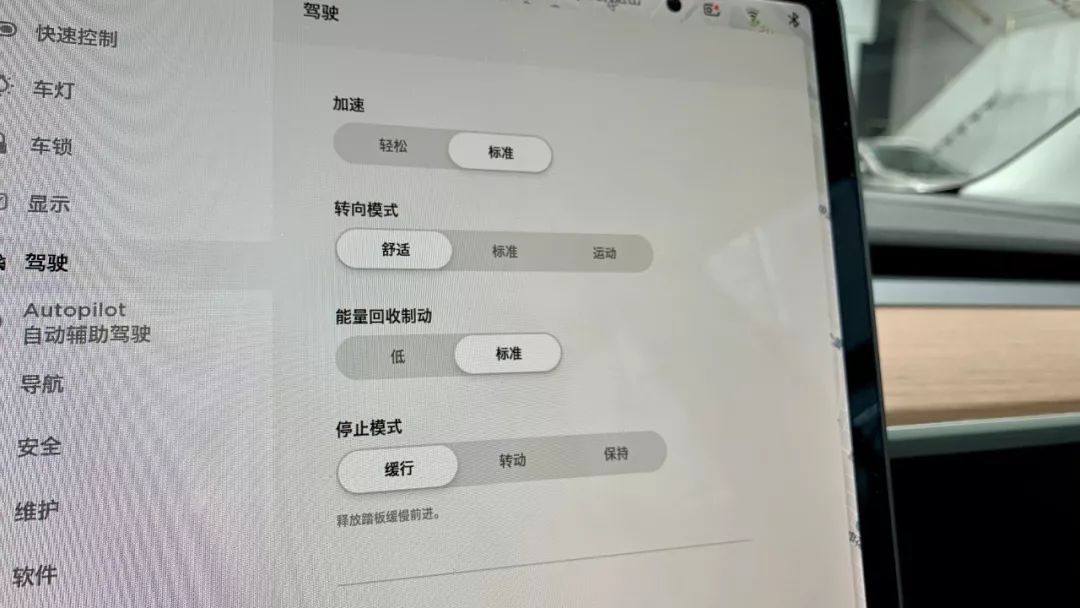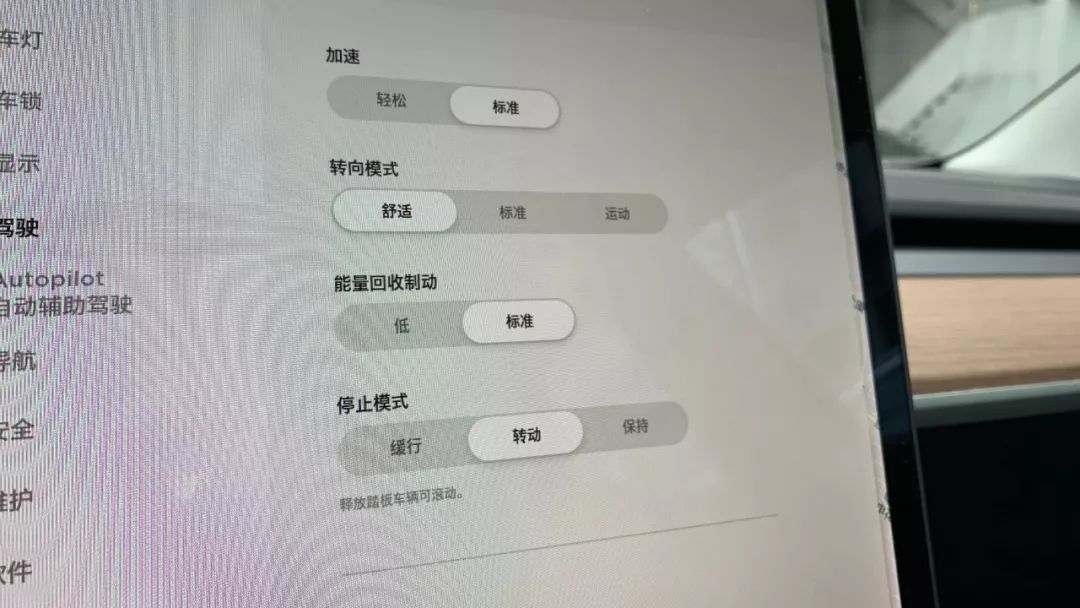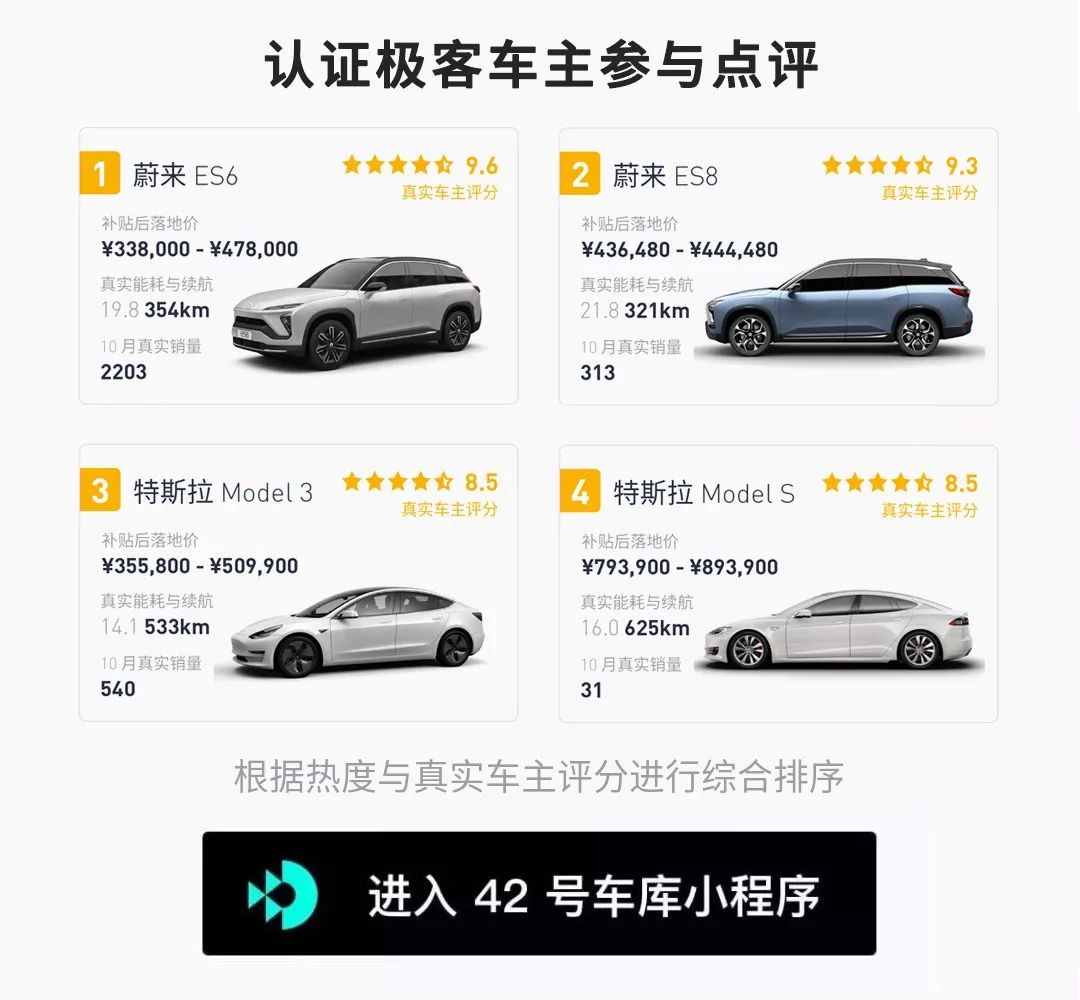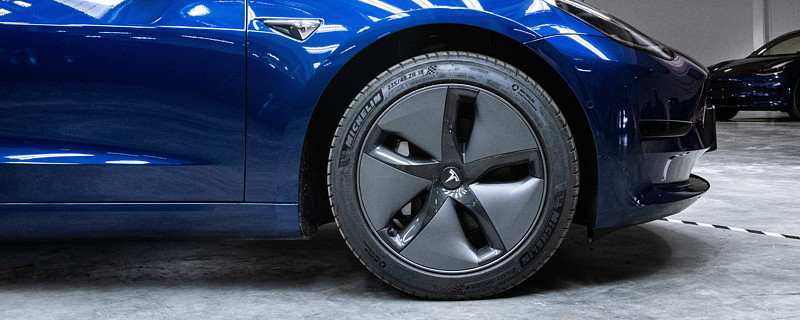On the topic of single-pedal driving, Tesla may not be the pioneer, but it is certainly one of the most important popularizers.
The first time I experienced Tesla’s single-pedal driving mode, it completely overturned my understanding of driving.
On November 8, 2019, Tesla began rolling out software updates to version 2019.36.x for its vehicles, which introduced a new “stop mode” on top of the existing regenerative braking. When I tried it with a mindset being overturned again, I actually got motion sickness and still haven’t gotten used to it today.
What are the three advantages of single-pedal operation?
Before explaining what “stop mode” is, let me introduce single-pedal mode, because it is a variation based on single-pedal mode.
Single-pedal mode means that the driver can control the car’s acceleration and deceleration through a single accelerator pedal – pressing down on the accelerator pedal accelerates the car, and lifting it up applies the brakes, with the braking force being linearly proportional to the extent of lifting.
Compared to the driving mode of accelerator pedal + brake pedal in gasoline cars, the original intention of this calibration is to simplify driving as much as possible, bringing three direct benefits.
First, simplified driving.
Single-pedal operation can greatly reduce the frequency of the right foot moving back and forth, and in daily driving, except for sudden braking or stopping, the mechanical brake is rarely needed.
The first time I encountered single-pedal operation, I didn’t need any adaptation process and was able to start driving right away. Moreover, using single-pedal operation while driving on mountain roads provided me with a better experience than the conventional two-pedal operation. When I returned to the gasoline car on the same mountain road, it was the first time that I felt that the frequent switching of the right foot back and forth was so tiring.
Second, makes regenerative braking controllable, improving energy utilization.
This is also an advantage unique to electric cars. Regenerative braking during deceleration can effectively increase the driving range of electric vehicles and reduce energy waste.
Many people may say that many gasoline cars today also have regenerative braking, and through a motor that is connected in series with the belt wheel, kinetics can be recovered to charge the small battery. I don’t deny this point, but in this situation, the amount of electricity generated by regenerative braking is very small.
On the one hand, the capacity of the small battery itself is not large, and on the other hand, the core reason lies in the charging rate. The maximum charging rate of the battery is proportional to its capacity, that is, the larger the battery capacity, the higher the charging power. Currently, the charging rate of most power batteries is between 1.2C to 1.5C.
When regenerative braking, the peak power generation of the vehicle can reach 70-80 kW, but the small battery in gasoline cars cannot handle such high power consumption and energy storage, so more kinetical energy is still wasted.
(As for the power-type batteries used in hybrid models, I won’t go into detail here.)
Third, reduces wear and tear on brake discs.Because most of the braking actions are replaced by regenerative braking, the wear of the brake pads can be greatly reduced. A Model S owner once told me that he usually uses one-pedal operation and rarely uses the brakes. He has driven over 60,000 kilometers in 3 years and never replaced the brake pads.
Currently, most models that support one-pedal operation can reduce the vehicle speed to 8-30 km/h through regenerative braking. If you want to stop, you need to use the brake pedal, which does not achieve true one-pedal operation.
However, Tesla’s latest Stop Mode can achieve complete braking. As soon as the new version of the software was updated, I experienced it for the first time. As mentioned above, I got dizzy and didn’t even eat dinner.
What are my three points of discomfort with the Stop Mode?
Tesla’s new Stop Mode has three options:
Roll: “Release the pedal to roll forward slowly”, which is the same as the previous one-pedal mode.

Creep: “Release the pedal, the vehicle can roll”, Tesla’s translation is a bit difficult to understand, but from my personal experience, the vehicle will decelerate to 8 km/h in this mode, and after reaching 8 km/h, the vehicle will slide to a stop.

Hold: “Reduce the applicable vehicle speed of regenerative braking, automatically combine braking to stop the vehicle, and further maximize the range”, which means that regenerative braking will be stronger. After releasing the accelerator pedal, the vehicle will decelerate to a stop faster.

Let’s focus on “Hold“. The intention of introducing the new mode is obvious, to simplify driving to the maximum extent and further recover kinetic energy to increase range.
In terms of experience, when the vehicle speed is above 30 km/h, there is no difference from before the update, and the significant changes are concentrated below 30 km/h.
First, the braking point has changed. Under the original driving habit, we may have completely released the accelerator pedal 40 meters away from the front vehicle and relied on regenerative braking to decelerate, but in the new mode, regenerative braking is stronger, and I can release the accelerator pedal 25 meters away from the front vehicle.If you try the new mode with your original driving habits, you need to press the accelerator pedal after each stop to move the car forward before stopping again. This can easily cause discomfort in congested traffic conditions before fully adapting to the new mode.
This actually means a reestablishment of the safety distance in everyone’s mind. Previously, you could completely release the accelerator pedal when there was still 40 meters of distance to the preceding vehicle, but in the new mode, it is only 30 meters. I still need to keep my foot on the accelerator pedal.
Secondly, low-speed driving requires using the accelerator pedal to control acceleration.
Choosing the “Hold” mode means giving up the crawl function. That is to say, when you want to crawl at a very low speed, you need to control the accelerator pedal with a delicate foot technique, which was never experienced before.
Thirdly, when reversing, you also need to use the accelerator pedal to control acceleration.
The third point is actually the same as the second point, except that it is driving in reverse. This is also a major change in driving habits, but the change in reverse driving habit is even more significant.
My original driving habit was to control the speed with the brake pedal, but now I need to control the speed with the accelerator pedal. Before, I would increase speed by releasing the brake pedal and accelerate by pressing the brake pedal. Now, I need to press the accelerator pedal to accelerate and lift the accelerator pedal to slow down. This is a logical reversal and subversion.
In my personal recent experience, after a few days of driving, I still couldn’t get used to Tesla’s new stop mode. This mode seems to have no major changes, just the ability to stop. However, the driving habits in the most common congested road sections in our daily driving are totally overturned.
I find it very difficult to control the acceleration and deceleration smoothly while creeping. I cannot accept stepping on the accelerator pedal when reversing in narrow parking spaces. So after adapting for a while, I switched back to the original mode.
On the contrary, @哲伦班长 completely agrees with me. He said that he no longer needs to use the brake after adapting, and driving feels more relaxed with just one pedal.
From the design of Tesla’s car models over the years, Tesla has always wanted to bring some fresh blood to this outdated automotive industry. Whether it is the seemingly unique pure electric route at that time, the 17-inch center console screen that shocked the industry, the first mass-produced model without an instrument panel, or the exterior design of the Cybertruck, they all subverted the industry.
Tesla has fully proved to us that it’s not that this industry doesn’t need to change, but that no one is taking the initiative to change.
From the calibration of Model 3, even if the energy recovery is adjusted to the lowest level, there is still a relatively large drag force. It is not that Tesla cannot provide lower kinetic energy recovery options, but that Tesla wants to encourage most conservative users to try this new driving method through this method, and only then can they discover its benefits.The risks of doing so are huge, and failure will result in ruin. Tesla needs to ensure that its approach is right and acceptable to the “majority” of people in order to be so forceful. Unfortunately, I am not one of the “majority” this time. Are you?



This article is a translation by ChatGPT of a Chinese report from 42HOW. If you have any questions about it, please email bd@42how.com.
